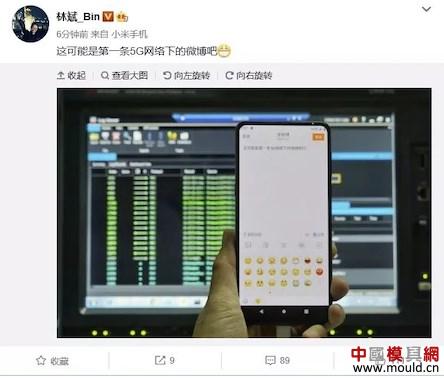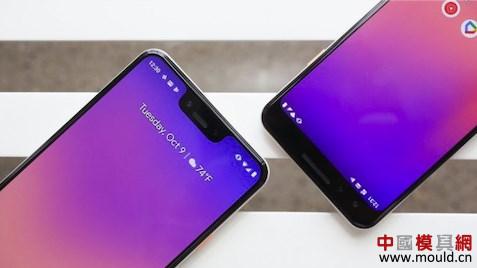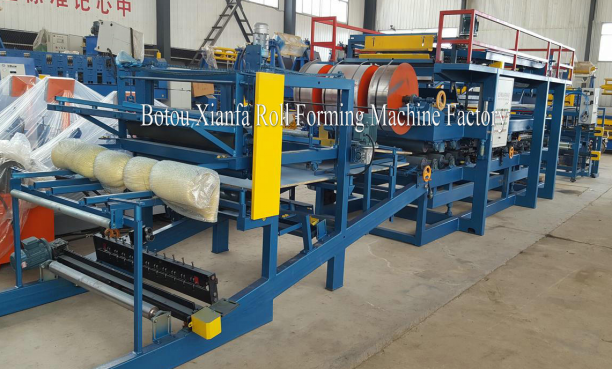Wireless communication technology is updated almost every ten years.

At present, global operators are in the midst of 5G commercial deployment. As of November 2018, 182 operators around the world have conducted 5G trials, deployments and investments in 78 countries. China announced that it will start commercial trials in 2019 and promote commercial scale in 2020; South Korea is expected to start commercial scale in 2019; Europe will focus on industrial Internet exploration, and it is expected that individual radical operators will try commercial use in 2019. According to statistics, the first round of commercial use of 5G will cover one third of the world's population.
From the results, 5G will bring about different changes from the past, but most people still have some questions about 5G. These questions mainly come from the following aspects.
Do we need 5G?
In the 3G era, users' needs for mobile Internet have been met, and 4G network allows users to enjoy the convenience brought by mobile Internet anytime and anywhere. So, do we really need 5G?
First of all, China has the world's largest mobile market, and is an important participant and supporter of global 5G technology research and development and industrial innovation. China has always attached great importance to the development of mobile communications. In 2006, the State Council issued the National Medium- and Long-Term Science and Technology Development Plan. The 16 major projects identified include a new generation of mobile wireless special network, which fully supports the development of China's mobile communications. It achieved the breakthrough of 3G, the synchronization of 4G, the initial lead of 5G, and achieved the leading goal in some technologies and business fields, which laid the foundation for building a network power and manufacturing power.

Second, the ICT industry has been driven by supply rather than demand for a long time, but the situation has changed.
According to statistics, by 2025, there will be 100 billion connections worldwide, of which 55% will be concentrated in the commercial sector, such as intelligent production, smart cities, etc. The value lies in improving production efficiency and creating production efficiency. In addition, 45% of the connection applications in the consumer-oriented field of smart home, car networking, wearable devices, etc., will greatly enhance the quality of life of people. The connection of 7 billion people may only account for 10% of the total number of connections, and the vast majority of connections will be the connection of people and things, things and things. That is to say, 99% of the devices have not been connected so far.
With the development of smart cities, more demands are placed on the network, which is based on the number of connections, bandwidth and delay.
Based on this, 5G came into being. Based on the above requirements, 5G should have a number of connections of 100 billion levels, an ultra-low latency of milliseconds, and a communication rate of 10 Gbps compared to existing mobile communication technologies.
“4G changes life, 5G changes society.†Qiu Gang, deputy inspector of the Ministry of Science and Technology, said: “As the most important infrastructure in the Internet age, 5G will improve the quality of all industries and the new digital economy for the traditional economy. Transformation provides a technical premise and is a new kinetic energy for economic development."
5G is coming, where is 4G going?
The future network will be the state of long-term coexistence between 4G LTE and 5G NR. The China Telecom 5G Technology White Paper has an accurate description of 5G network evolution: "An important prerequisite for 5G network evolution is that 4G and 5G networks will coexist for a long time. Existing networks such as 5G, 4G, and WiFi can meet the needs of multiple scenarios to achieve indoor and outdoor network collaboration."

As mentioned before, 4G networks can meet the personal needs of current users, such as video and image transmission. Therefore, the application scenarios of the future 5G are more specific application scenarios such as industrial Internet, manufacturing, and intelligent driving. Both have the characteristics of long-term coexistence and coordinated development.
Zhang Zhiwei, chief marketing officer of Ericsson's Northeast Asia region, said: "You don't have to rely on converting 4G users to 5G users to develop 5G. Even if you don't replace 4G, 5G will find a differentiated place to live."
In addition, there is still a dispute about the market demand in the 5G rate. In fact, in the early 4G era, there were people who questioned the high rate. The facts show that after a period of development, there is no such thing as the relationship between supply and demand. The "waste" problem.
At the same time, it is worth noting that as user traffic demands continue to proliferate, the main challenge for 4G networks is not the speed, but the network capacity. 5G's first standard R15 focused enhanced mobile broadband (eMBB), introducing a wider frequency band and Massive MIMO technology, can make a thick network capacity layer without adding new sites, releasing the squeezed user traffic demand. Huawei's "All Bands Go to 5G" network evolution strategy, 5G deployment is not limited to C-Band and millimeter waves, Sub-3G spectrum also has the ability to evolve to 5G, to smoothly introduce 5G new capabilities, achieve 10 Double network capacity, 10dB coverage enhancement and 10x experience boost.
Will the phone be affected?
In 2019, the first batch of 5G smart phones, including folding mobile phones, will be launched soon. The mainstream terminal manufacturers will quickly launch the economical thousand yuan machine after 5G commercialization, and push forward the development of the 5G industry.
Xiaomi has already opened the 5G command and data link connection in the Sub-6GHz (below 6GHz) band in September this year. On October 23, Xiaomi opened the connection in the mmWave millimeter wave band. On November 22nd, Xiaomi President Lin Bin sent the first Weibo through a 5G network through a Xiaomi MIX 3 engineering machine. According to GSMArena reported on November 23, the 5G version of Xiaomi Mix3 will be launched in Europe in 2019, which will be the world's first 5G smartphone.

Samsung is expected to launch the 5G version of the Galaxy S10 Plus in the spring of 2019. It is reported that this product will use the Galaxy series to launch the 10th anniversary of the launch, as the latest flagship product release of the series. The phone's internal codename is "Beyond X", which will have a 6.44-inch screen and 6 cameras, including two front and four rear, and support for fingerprint recognition. The phone is expected to be unveiled in mid-February next year, and Samsung hopes that the product will become the biggest highlight of its show during MWC. Samsung's folding screen mobile phone is also under development, and it is reported that it is expected to launch the 5G version in the second half of next year.
Huawei, the latest news shows that it plans to launch a foldable 5G mobile phone at MWC in February 2019. The official sales time of this mobile phone may be in the second half of 2019. At the same time, before and after next year's MWC, Huawei may also be the first P30 Pro mobile phone equipped with 5G baseband.
OPPO CEO Chen Mingyong said: "5G is an inevitable trend for OPPO. In addition to striving to become the first manufacturer to launch 5G mobile phones, the exploration of 5G+ era application scenarios will ultimately determine the value of 5G. In the future, enter 5G, AI. In the era of the universal Internet of Everything, OPPO will strive to be the leader of this era. In fact, OPPO established the 5G team as early as 2015, and started 5G research and development at the beginning of the standard setting. Since the 5G standard began to freeze in December 2017, OPPO quickly invested in 5G product development. In August of this year, it took the lead in opening 5G signaling and data links, and in October, it realized the 5G mobile phone Internet access for the first time.
In the middle of this month, ZTE announced on the official Weibo that ZTE mobile phones have realized 5G calls, 5G Internet access, and 5G WeChat. It shows that in ZTE's lab, 5G terminal phones have successfully implemented WeChat information and data transmission and reception. At the end of last month, ZTE's mobile phone and data terminal dialed a telephone signal at the Shanghai R&D Center to formally complete the 5G call of the simulation system. It is reported that ZTE's 5G terminal will launch 5G commercial mobile phones in the first half of next year. In 2020, a large number of 5G terminals will begin to be launched in batches.
Lenovo's Motorola has launched the first mobile phone Moto Z3 that supports 5G modules on August 2 this year. This month, Verizon announced that it has successfully tested 3GPP 5G NR (New Radio) commercial networks on Moto Z3 phones and enabled Internet access using 5G networks.

Apple may be the most conservative manufacturer of 5G mobile phones at this year. At this year's 鳌Asia Forum 2018 annual meeting, Apple's global vice president Ge Yue said that Apple will ensure the energy consumption and battery temperature after using 5G mobile phones. After the important indicators are not problematic and do not affect the user experience, they will fully embrace 5G technology.
So, when can I use 5G?
In June this year, Beijing launched the Science and Technology Innovation Fund, and the parent fund reached 30 billion yuan. The 5G industry fund is also planning. At present, Beijing is preparing to build a 5G research institute to promote the key core technology research. At the same time, in the areas of intelligent transportation, smart city, ultra-high-definition video, etc., accelerate the deployment of 5G applications, make full use of the construction of Beijing City Sub-center and new airport, the application of the World Horticultural Exposition, Winter Olympics, Tiananmeng and other application scenarios, centralized display and demonstration operation A batch of 5G new technologies and new achievements.
As for operators, as early as October 2017, China Telecom has completed the deployment of the country's first 5G test site in Shenzhen. It is planned that by March 2019, the city of Shenzhen is expected to build 70 sites and further expand to Futian, Baoan and Pingshan. And other areas. Among them, with the Shenzhen Software Industry Base (Shuangchuang Park) as the center, 50 50G stations will be built to form a small-scale contiguous coverage. The pilot area includes Shuangchuang Park, Science and Technology Ecological Park and Shenzhen University Campus. It is worth mentioning that China Telecom's national dual-capacity open service base and China Telecom's 5G dual-innovation open center and China Telecom's Internet of Things industry ecological innovation center have been officially opened to the Shenzhen Bay Science and Technology Ecological Park in Nanshan District.
At present, China Mobile provides over 100 million yuan for 5G joint venture projects and 1000+ 5G base station test environments in 17 cities.
As of the end of September, 227 partners have joined 5G Lianchuang and built 14 regional open laboratories. Each open laboratory combines different local characteristics to carry out application incubation. For example, Jiangsu 5G Lianchuang Open Lab focuses on areas such as car networking and industrial internet.
In the 5G application demonstration project, China Mobile will start 9 categories of 5G application demonstrations in 12 cities in the first half of 2019, including medical, artificial intelligence, transportation, education, industrial manufacturing, energy, municipal, video +, Entertainment and so on.
China United 5G Innovation Center officially settled in Chengdu on September 29, becoming China Unicom's first innovation center in the west. Sichuan Unicom opened an end-to-end 5G trial commercial network in West China Hospital and Chengdu Third Hospital, and conducted related business tests. In the commercial terminal environment, the test peak rate can reach more than 1.8 Gbps, and the result can meet the relevant requirements of the subsequent 5G network commercial.
Wireless networks are changing the way humans communicate and access information, and network access anytime and anywhere is driving the transformation of the telecommunications industry. In the near future, wireless access will become the main access method. 5G wireless technology will connect all applications, services and things together through a flexible, reliable and secure wireless network, enabling humans to enter the era of mobile Internet.
Special uesage Roofing Sheet Roll Forming Machine is for speical kinds of roofing sheet , for example the Composite Panel Forming Machine. It is also named Sandwich Panel Production Line. It is a large equipment. Sandwich Panel Roll Forming Machine makes the sandwich panel, which has an insulating effect. And the machine can be divided into eps sandwich panel forming machine and rock wool sandwich roll forming machine, the filler between two steel sheet is different.

Composite Panel Forming Machine
Sandwich Panel Production Line,Eps Sandwich Board Machine,Sandwich Panels Roll Forming Machine,Rock Wool Composite Panel Making Machine
Xianfa Roll Forming Machine Factory , https://www.btxianfa.com